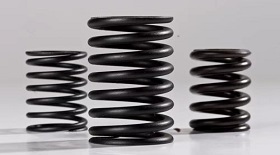Check steps of valve spring
Before visiting the Mechanical parts Exhibition, let us have a look at the knowledge of valve spring.
The valve springs are mostly cylindrical helical springs, as shown in the figure. When the working frequency of the valve spring is equal to or integer times its natural frequency, the resonance of the valve spring will occur and the probability of breaking will increase. In order to prevent resonance, variable pitch springs can be used. At present, most engines use concentric double springs. The internal and external springs have opposite rotation directions, and the external spring stiffness is larger than the internal spring. Double springs not only prevent resonance, but also shorten the length of the spring. And when one spring breaks, the other spring can continue to work, so that the valve does not fall into the cylinder.
Check steps
(1) Checking the free length of the valve spring. The free length of the caliper side valve spring should be in line with the standard value. If it does not meet, it should be replaced.
(2) Checking the verticality of the valve spring. Verticality of valve spring should be checked with right-angle ruler and flat plate. Its value should meet the standard value, otherwise it must be replaced.
(3) Checking the pre tightening force of the valve spring. The preload of valve spring should be measured by dynamometer, and its value should be up to the standard. If the pre tightening force is lower than the standard value, the valve spring should be replaced.
(4) To prevent damage, we should constantly compress springs.



